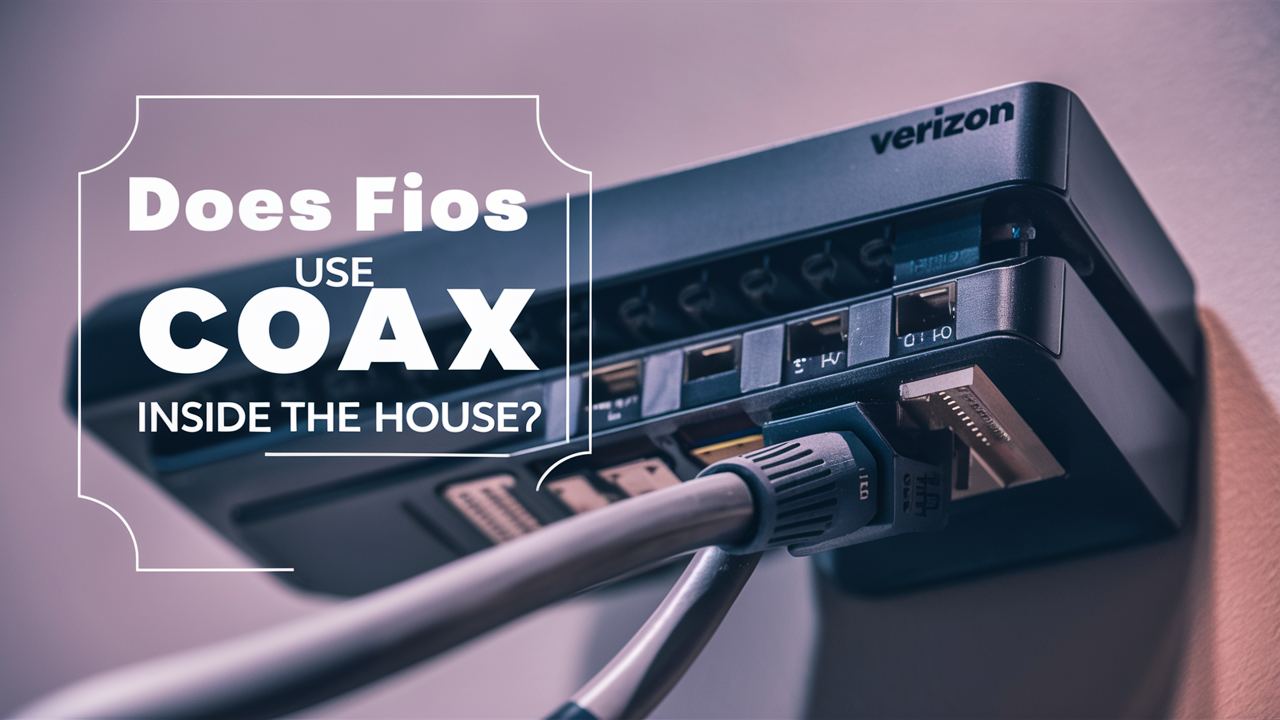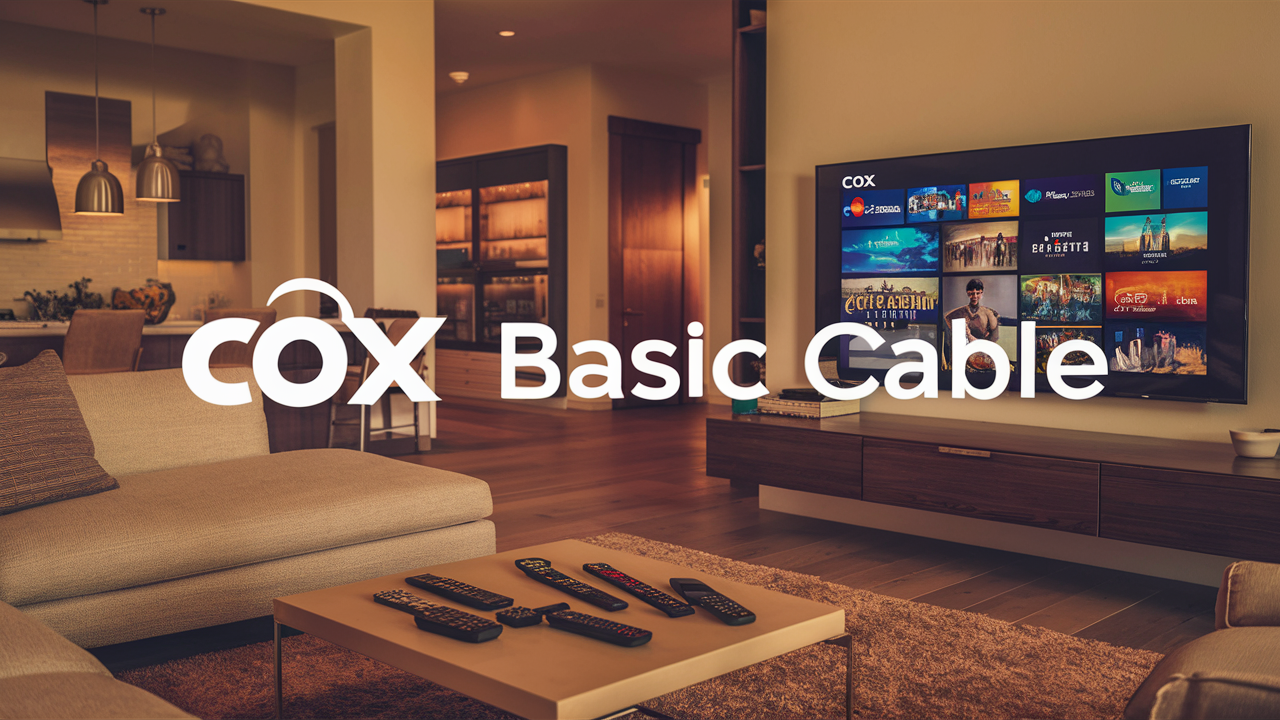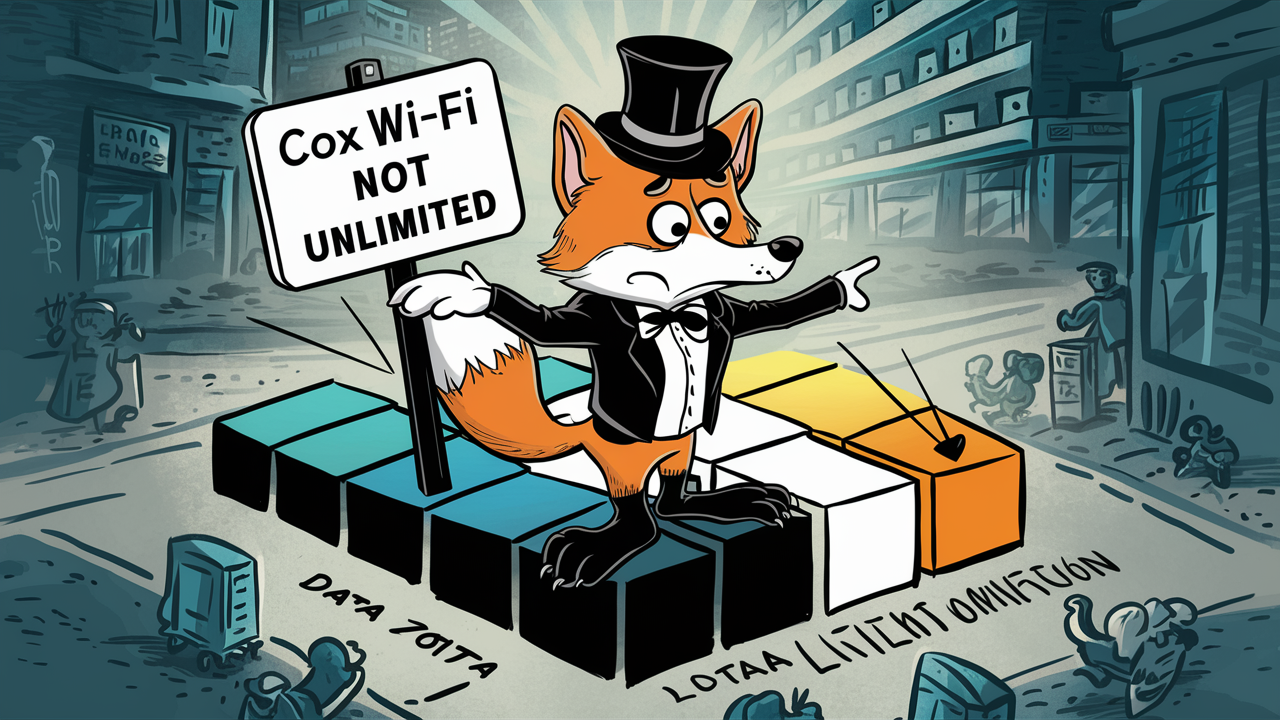How Powerful is Cox Internet?

Discover the true power of Cox Internet in 2025. This comprehensive guide explores its speeds, reliability, plans, and how it stacks up against competitors, helping you determine if Cox is the right choice for your home or business needs.
Understanding Cox Internet's Power: A 2025 Deep Dive
In the ever-evolving digital landscape of 2025, internet connectivity is no longer a luxury but a fundamental necessity. From remote work and online education to immersive entertainment and smart home integration, the demands on our internet service providers (ISPs) have never been higher. Cox Communications, a prominent player in the US broadband market, offers a range of internet services designed to meet these diverse needs. But how powerful is Cox Internet, really? This article aims to provide a comprehensive, data-driven analysis of Cox's capabilities, focusing on its performance metrics, plan offerings, and overall value proposition as of 2025. We will delve into the technical specifications that define its power, explore the real-world implications for users, and offer insights to help you make an informed decision about whether Cox Internet is the right fit for your digital life. Understanding the nuances of download speeds, upload speeds, latency, and network reliability is crucial for anyone seeking a robust and dependable internet connection. By examining Cox's infrastructure, technological advancements, and customer feedback, we can paint a clear picture of its current standing and future potential in the competitive ISP market.
The term "power" when applied to internet service can be interpreted in several ways. It encompasses raw speed – the sheer volume of data that can be transferred per second. It also includes reliability – the consistency of that speed and the absence of frustrating interruptions. Furthermore, it involves the capacity to handle multiple devices and demanding applications simultaneously without degradation. For businesses, power translates to seamless operations, efficient communication, and the ability to leverage cloud-based services without lag. For households, it means uninterrupted streaming of high-definition content, smooth video conferencing, responsive online gaming, and the efficient functioning of smart home ecosystems. As we move further into the mid-2020s, the average household is connecting more devices than ever before, from smart TVs and thermostats to security cameras and voice assistants. Cox Internet's ability to power this increasingly connected world is the core question we aim to answer.
Key Concepts: Decoding Internet Performance
Before diving into Cox's specific offerings, it's essential to understand the fundamental metrics that define internet performance. These concepts are the building blocks for evaluating any ISP.
Download Speed
This is the rate at which data is transferred from the internet to your device. It's measured in megabits per second (Mbps) or gigabits per second (Gbps). Higher download speeds are crucial for activities like streaming videos (especially in 4K), downloading large files, browsing websites, and playing online games. For a typical 2025 household with multiple users and devices, a minimum of 100 Mbps is generally recommended for a smooth experience, with 300 Mbps or higher being ideal for power users and larger families.
Upload Speed
This is the rate at which data is transferred from your device to the internet. While often lower than download speeds, upload speed is increasingly important in 2025. It affects the quality of video calls, the speed of uploading large files (like videos to social media or cloud storage), live streaming, and online gaming. For users who frequently engage in these activities, higher upload speeds are a significant advantage. Asymmetric Digital Subscriber Line (ADSL) technology typically offers very low upload speeds, while Cable and Fiber Optic technologies offer much better upload capabilities. Cox primarily uses a hybrid fiber-coaxial cable network, which offers decent upload speeds, though pure fiber providers often surpass it.
Latency (Ping)
Latency, often referred to as "ping," measures the time it takes for a data packet to travel from your device to a server and back. It's measured in milliseconds (ms). Lower latency is critical for real-time applications like online gaming, where a delay of even a few milliseconds can impact gameplay. High latency can also make video calls feel choppy and web browsing sluggish, even with high speeds. For competitive online gaming in 2025, aiming for latency below 50ms is desirable, with under 20ms being optimal.
Bandwidth
Bandwidth refers to the maximum amount of data that can be transmitted over an internet connection in a given amount of time. It's often used interchangeably with speed, but it's more accurately the capacity of the connection. Think of it like a highway: speed is how fast cars can travel, while bandwidth is how many lanes the highway has. A connection with high bandwidth can handle many devices and demanding applications simultaneously without slowing down. Cox's various plans offer different bandwidth capacities.
Reliability and Uptime
This refers to how consistently your internet connection is available and performs as expected. ISPs typically aim for uptime percentages of 99.9% or higher. Frequent outages or inconsistent performance can be incredibly disruptive, impacting work, school, and entertainment. Cox, like most major ISPs, invests heavily in network infrastructure to maintain high reliability, though localized issues can still occur.
Cox Internet in 2025: Speed, Reliability, and Availability
Cox Communications operates primarily using a hybrid fiber-coaxial cable network, a technology that has proven robust and capable of delivering high speeds. In 2025, Cox continues to invest in upgrading its infrastructure, including deploying DOCSIS 3.1 technology, which allows for significantly higher speeds over existing cable lines. This technology enables Cox to offer gigabit-level download speeds in many of its service areas.
Speed Tiers and Offerings (2025 Data)
Cox offers a tiered approach to its internet plans, catering to a wide range of user needs and budgets. As of early 2025, typical advertised speeds include:
- Essential/ConnectAssist: Often starting around 25-50 Mbps download. Suitable for basic browsing, email, and occasional streaming on a few devices. This tier is also frequently offered with low-income assistance programs.
- Preferred/ConnectMore: Typically ranges from 100 Mbps to 300 Mbps download. This is a popular choice for many households, capable of supporting multiple users streaming HD content, video conferencing, and general internet use. Upload speeds in this tier usually range from 10-20 Mbps.
- Premier/Ultra Connect: Offering speeds from 300 Mbps up to 500 Mbps download. This tier is ideal for larger families, households with many connected devices, or those who frequently download large files or stream 4K content. Upload speeds can reach 20-35 Mbps.
- Gigablast: Cox's flagship offering, providing download speeds of up to 1 Gbps (1000 Mbps) and often higher in select areas. Upload speeds for Gigablast can vary, typically ranging from 35 Mbps to 100 Mbps depending on the specific location and network upgrades. This tier is designed for power users, businesses, and households with extremely high demands, such as simultaneous 4K streaming on numerous devices, extensive cloud gaming, and rapid large file transfers.
It's important to note that advertised speeds are often "up to" speeds, meaning actual performance can vary based on network congestion, your home's internal wiring, and the equipment you use. Cox generally provides symmetrical or near-symmetrical upload speeds on its higher-tier plans, especially those leveraging DOCSIS 3.1, which is a significant improvement over older cable technologies.
Network Reliability and Uptime
Cox has a reputation for providing a relatively reliable service, particularly in its core markets. Their hybrid fiber network means that the main lines are fiber optic, which is less susceptible to interference and degradation than traditional copper. The coaxial cable connects from the neighborhood node to individual homes. While cable internet can be susceptible to neighborhood congestion during peak hours, Cox's ongoing network investments aim to mitigate this. Independent network performance studies in 2025 consistently place Cox among the top ISPs for uptime and consistent speeds, though they may not always reach the near-perfect reliability of pure fiber providers in all areas. Users can generally expect high uptime, with occasional localized disruptions due to maintenance or unforeseen issues.
Availability
Cox Communications is a major regional provider, serving primarily large metropolitan areas and their surrounding suburbs across the United States. Key service areas include parts of California, Arizona, Nevada, Oklahoma, Arkansas, Louisiana, Virginia, and parts of New England. Their service is not available nationwide, and availability of higher speed tiers like Gigablast can be more limited within their existing footprint. Prospective customers must check Cox's website for specific availability in their address.
Choosing the Right Cox Internet Plan: A Step-by-Step Guide
Selecting the appropriate Cox Internet plan is crucial to ensure you get the performance you need without overpaying. Follow these steps to make an informed choice:
Step 1: Assess Your Household's Internet Needs
Consider the following questions:
- How many people live in your household? More users generally mean more simultaneous connections and higher bandwidth requirements.
- How many devices are connected to the internet? Include smartphones, tablets, laptops, smart TVs, gaming consoles, smart home devices (thermostats, lights, cameras), etc.
- What are your primary internet activities?
- Basic Use (Email, Browsing): Low speeds (25-50 Mbps) are sufficient.
- Streaming (HD/4K): Recommend 100 Mbps minimum, with 300+ Mbps for multiple 4K streams.
- Online Gaming: Prioritize low latency and a decent download speed (100+ Mbps). High upload speeds are also beneficial for game updates.
- Remote Work/Video Conferencing: Aim for 100+ Mbps download and at least 10-20 Mbps upload for smooth, professional calls.
- Large File Downloads/Uploads: Higher speeds (300 Mbps+) and good upload speeds are essential.
- Do you use smart home devices extensively? These devices, while not always high bandwidth users individually, can add up when many are active simultaneously.
Step 2: Check Cox Availability in Your Area
Visit the official Cox Communications website and enter your full address. This will show you which plans and speeds are actually available at your location. Availability of higher tiers like Gigablast can be highly specific.
Step 3: Compare Plan Features and Pricing
Once you know what's available, compare the download/upload speeds, data caps (though Cox largely offers unlimited data on most plans now, it's worth confirming), contract terms, and monthly pricing. Pay close attention to any introductory offers and the price after the promotional period ends. Also, factor in equipment rental fees (modem/router) if you don't plan to purchase your own compatible equipment.
Step 4: Consider Bundling
Cox often offers discounts when you bundle internet with their TV or home phone services. If you're considering these services anyway, bundling can lead to significant savings. However, ensure the bundled package still meets your internet needs.
Step 5: Read the Fine Print
Understand any data usage policies, early termination fees, and the exact duration of promotional pricing. Sometimes, a slightly more expensive plan with better performance might be a better long-term value if it avoids the need for an upgrade later.
Cox Internet vs. The Competition: A 2025 Comparison
Cox operates in a competitive ISP market. Its primary competitors include other large cable providers (like Spectrum, Xfinity), telephone companies offering DSL or fiber (like AT&T, Verizon), and smaller regional fiber providers. Here's a general comparison as of 2025:
| Feature | Cox Internet (Cable) | Fiber Optic Providers (e.g., Verizon Fios, Google Fiber) | DSL Providers (e.g., AT&T DSL) |
|---|---|---|---|
| Technology | Hybrid Fiber-Coaxial Cable | 100% Fiber Optic | Digital Subscriber Line (over phone lines) |
| Download Speeds (Typical Max) | Up to 1 Gbps (Gigablast) | Up to 2 Gbps or higher | Up to 100 Mbps (often much lower) |
| Upload Speeds | Varies (10 Mbps to 100 Mbps on higher tiers) | Symmetrical (same as download, e.g., 1 Gbps up) | Very low (typically 1-10 Mbps) |
| Latency | Good (20-50 ms typical) | Excellent (under 10 ms typical) | Poor to Fair (50-100+ ms typical) |
| Reliability | Good to Very Good | Excellent | Fair to Good (can be affected by distance from exchange) |
| Availability | Regional (major metro areas) | Limited (specific cities/neighborhoods) | Widespread (where phone lines exist) |
| Best For | Households needing high download speeds, good general performance, and wide availability within its service footprint. | Power users, gamers, businesses, and anyone needing the absolute best symmetrical speeds and lowest latency. | Basic internet needs in areas where faster options are unavailable. |
Cox's strength lies in its widespread availability within its service regions and its ability to deliver high download speeds comparable to fiber in many cases, thanks to DOCSIS 3.1. However, its upload speeds, while improved, generally do not match the symmetrical speeds offered by pure fiber providers. For tasks heavily reliant on uploading large files or consistent, high-quality video conferencing, fiber often holds the edge. DSL is generally outclassed by both Cox's cable and fiber competitors in terms of speed and performance.
Maximizing Your Cox Internet Experience: Best Practices
To ensure you're getting the most out of your Cox Internet service, consider implementing these best practices:
- Use a Compatible Modem and Router: While Cox provides rental equipment, purchasing your own DOCSIS 3.1 compatible modem and a high-quality Wi-Fi 6 or Wi-Fi 6E router can often provide better performance, reduce monthly rental fees, and offer more control over your network. Ensure any purchased equipment is on Cox's approved list.
- Optimize Wi-Fi Placement: Position your router in a central, open location in your home, away from obstructions like thick walls, metal objects, and large appliances that can interfere with the signal. Elevating the router can also help.
- Secure Your Network: Always use a strong, unique password for your Wi-Fi network and change the default administrator password on your router. Enable WPA3 encryption if available. This prevents unauthorized access that can slow down your connection and compromise your security.
- Regularly Reboot Your Equipment: Like any electronic device, modems and routers can benefit from occasional restarts. Rebooting your modem and router monthly can help clear cache and resolve minor connectivity issues.
- Understand Your Plan's Speeds: Periodically run speed tests (using sites like Speedtest.net or Cox's own speed test tool) to ensure you're receiving speeds close to what you're paying for. If there's a significant, consistent discrepancy, contact Cox support.
- Manage Connected Devices: Be mindful of how many devices are actively using bandwidth simultaneously. If you experience slowdowns during peak usage times, consider temporarily disconnecting non-essential devices or scheduling large downloads for off-peak hours.
- Consider a Wired Connection for Critical Devices: For devices that require the most stable and fastest connection (e.g., gaming consoles, high-end desktop computers, streaming devices), using an Ethernet cable directly to the router provides a more reliable connection than Wi-Fi.
Advanced Strategies for Power Users
For users who push their internet connection to its limits – gamers, content creators, small business owners, or those with extensive smart home setups – several advanced strategies can further enhance performance and stability with Cox Internet.
Utilizing Quality of Service (QoS) Settings
Many high-end routers offer Quality of Service (QoS) settings. QoS allows you to prioritize network traffic for specific devices or applications. For example, you can prioritize your gaming console or work laptop to ensure it receives the necessary bandwidth and lowest latency, even when other devices are heavily utilizing the network. This is particularly useful on shared connections where multiple demanding activities occur simultaneously.
Network Segmentation with VLANs
For advanced users or small businesses, implementing Virtual Local Area Networks (VLANs) can improve security and performance. VLANs allow you to segment your network, isolating different types of devices. For instance, you could place all your smart home IoT devices on a separate VLAN, preventing them from impacting the performance of your primary work or gaming devices and limiting potential security risks if an IoT device is compromised.
Monitoring Network Traffic
Sophisticated routers and network monitoring tools can provide insights into your network traffic. Understanding which devices or applications are consuming the most bandwidth can help you identify bottlenecks and optimize usage. Some routers offer built-in traffic monitoring, while dedicated network monitoring software can offer deeper analysis.
Investing in a Mesh Wi-Fi System
For larger homes or those with Wi-Fi dead zones, a mesh Wi-Fi system can significantly improve coverage and consistency. Mesh systems use multiple nodes that work together to create a single, seamless Wi-Fi network, ensuring strong signal strength throughout your entire home, which is essential for maintaining consistent speeds and low latency on all connected devices.
Understanding Cox's Network Infrastructure
While Cox primarily uses cable, understanding that their backbone is fiber optic is key. This means that while congestion can occur on the local cable segments, the core network is robust. Knowing this can help manage expectations, especially during peak usage hours in densely populated areas. For true symmetrical speeds and the lowest latency, pure fiber providers remain the benchmark, but Cox's Gigablast plans offer a compelling alternative for many.
Troubleshooting Common Cox Internet Issues
Even with a powerful connection, issues can arise. Here are common problems and troubleshooting steps:
Slow Speeds
Steps: Reboot modem/router. Run speed tests wired and wirelessly. Check if multiple devices are heavily using bandwidth. Ensure your router is up-to-date. If speeds remain low, contact Cox.
Intermittent Connectivity (Connection Drops)
Steps: Check all cable connections to the modem. Reboot modem/router. Test with a wired connection to rule out Wi-Fi issues. If the problem persists, it could be a line issue or network problem requiring Cox intervention.
High Latency (Lag)
Steps: Prioritize gaming/video conferencing traffic using QoS. Use a wired Ethernet connection. Close background applications consuming bandwidth. If latency is consistently high, it might indicate network congestion in your area or an issue with Cox's routing.
Wi-Fi Issues (Weak Signal, Dead Zones)
Steps: Relocate router. Update router firmware. Consider a Wi-Fi extender or a mesh Wi-Fi system for better coverage.
Modem/Router Not Connecting
Steps: Ensure all cables are securely connected. Reboot modem, then router. Check status lights on the modem for connectivity indicators. If lights indicate no connection, contact Cox.
The Future of Cox Internet and Broadband
Cox Communications is actively participating in the evolution of broadband. As of 2025, the company continues to expand its fiber-optic footprint and upgrade its existing cable network with technologies like DOCSIS 4.0, which promises even higher speeds and improved symmetrical performance. The push towards gigabit and multi-gigabit speeds is a central theme, driven by the increasing demand for bandwidth-intensive applications like virtual reality, augmented reality, cloud gaming, and the ever-expanding Internet of Things (IoT). Cox is also exploring advancements in network virtualization and AI-driven network management to enhance efficiency, reliability, and customer experience. While pure fiber providers will likely continue to set the benchmark for ultimate performance, Cox's ongoing investments ensure its cable infrastructure remains a powerful and competitive option for millions of households and businesses, particularly in areas where fiber deployment is slower or more costly.
Conclusion
In conclusion, Cox Internet offers a powerful and compelling connectivity solution for a significant portion of the US market in 2025. Its hybrid fiber-coaxial network, bolstered by technologies like DOCSIS 3.1, enables the delivery of impressive download speeds, including multi-gigabit options through its Gigablast plans. For many households, Cox provides a reliable and robust internet experience capable of handling simultaneous streaming, gaming, remote work, and the demands of a growing number of connected devices. The company's tiered plan structure allows users to select a service that aligns with their specific needs and budget, ranging from basic connectivity to high-performance tiers.
While Cox's upload speeds, though improved, generally do not match the symmetrical performance of pure fiber optic providers, they are more than adequate for the majority of users. For those whose primary activities involve heavy uploading or require the absolute lowest latency, comparing Cox's offerings with available fiber options is advisable. However, Cox's wider availability within its service regions often makes it a more accessible choice than fiber. By implementing best practices, such as optimizing home network equipment and understanding plan limitations, users can further maximize the power and efficiency of their Cox Internet connection. As Cox continues to invest in network upgrades, its services are poised to remain a strong contender in the broadband landscape for years to come, offering a blend of speed, reliability, and value.





